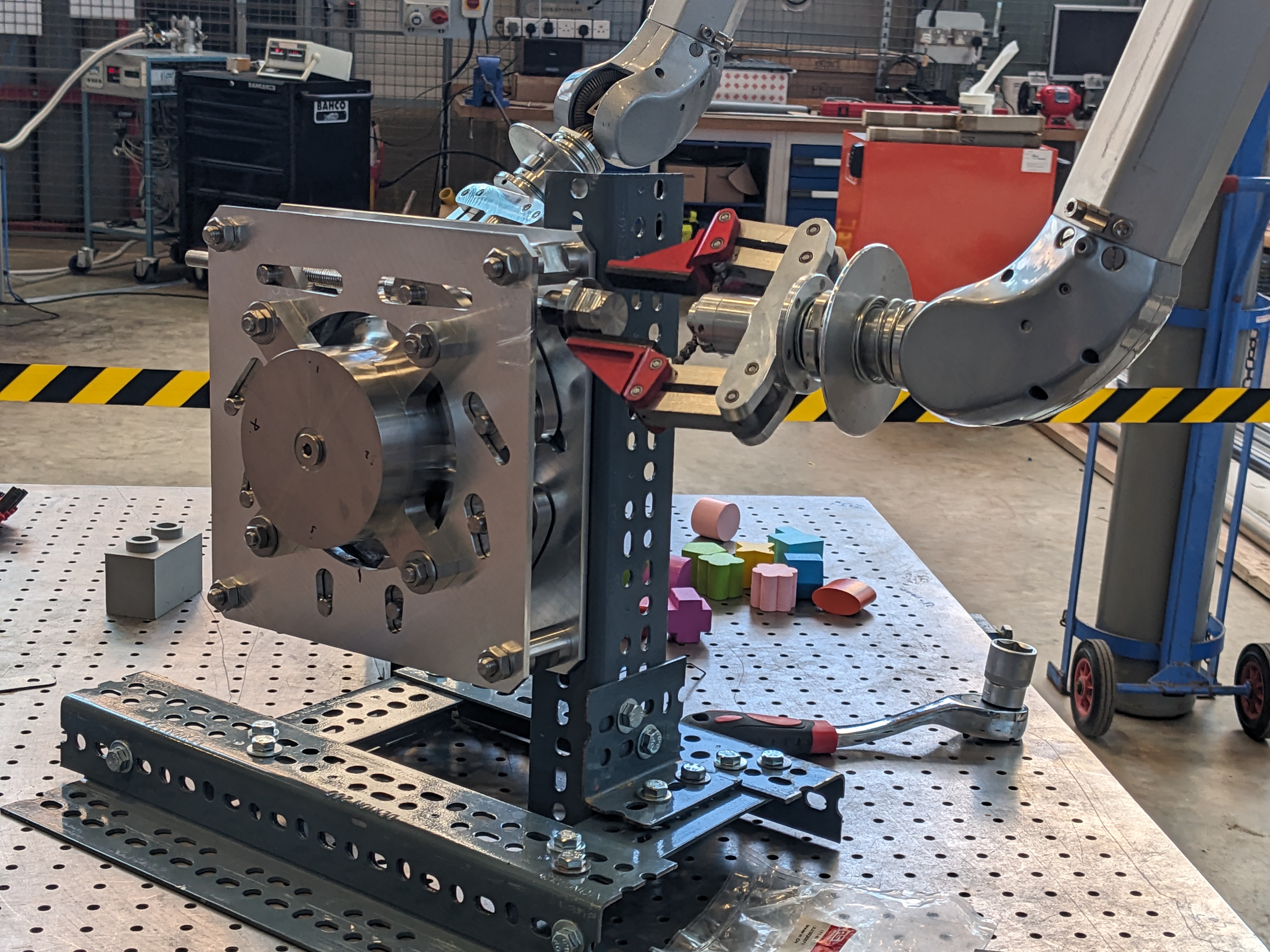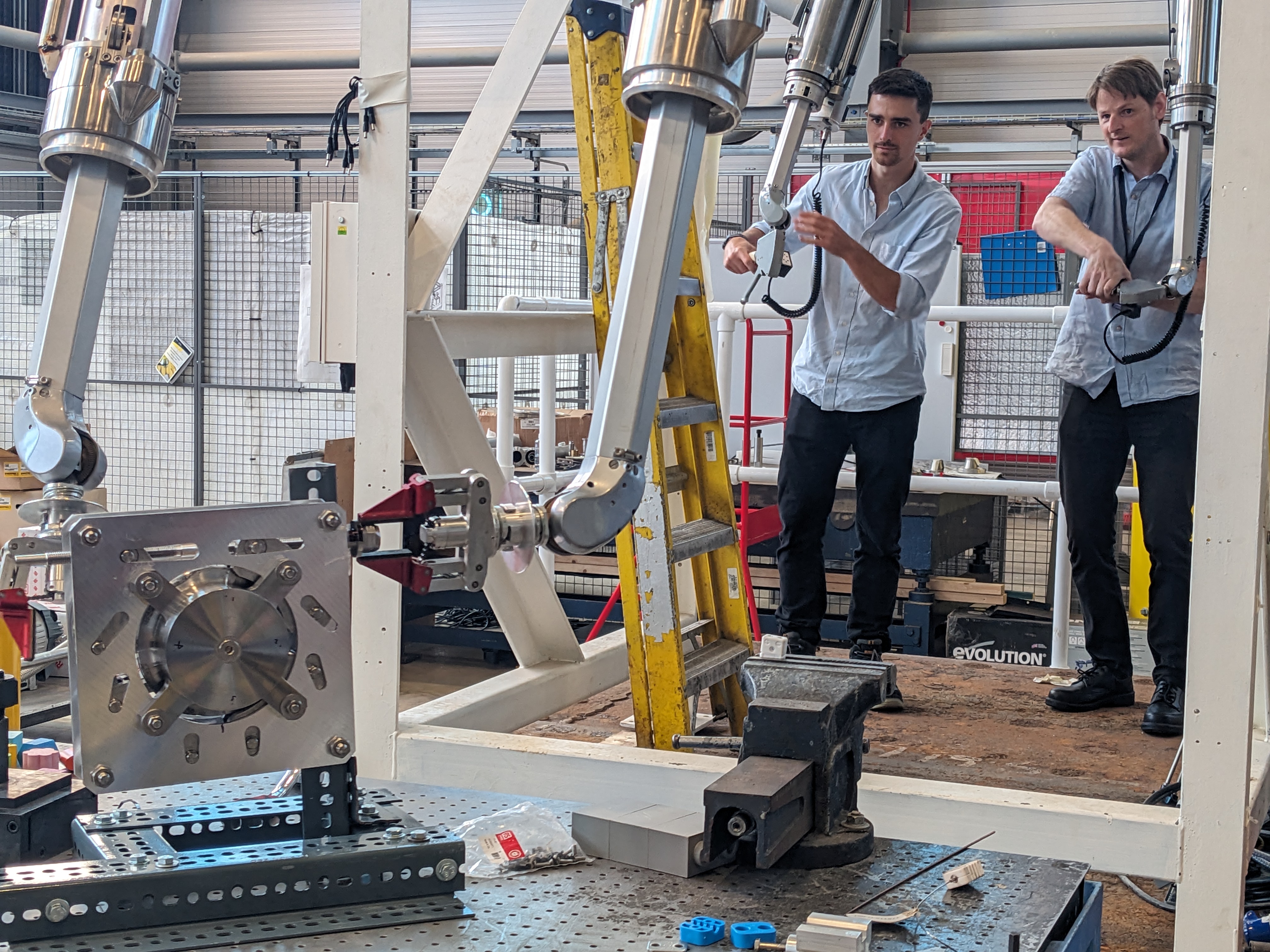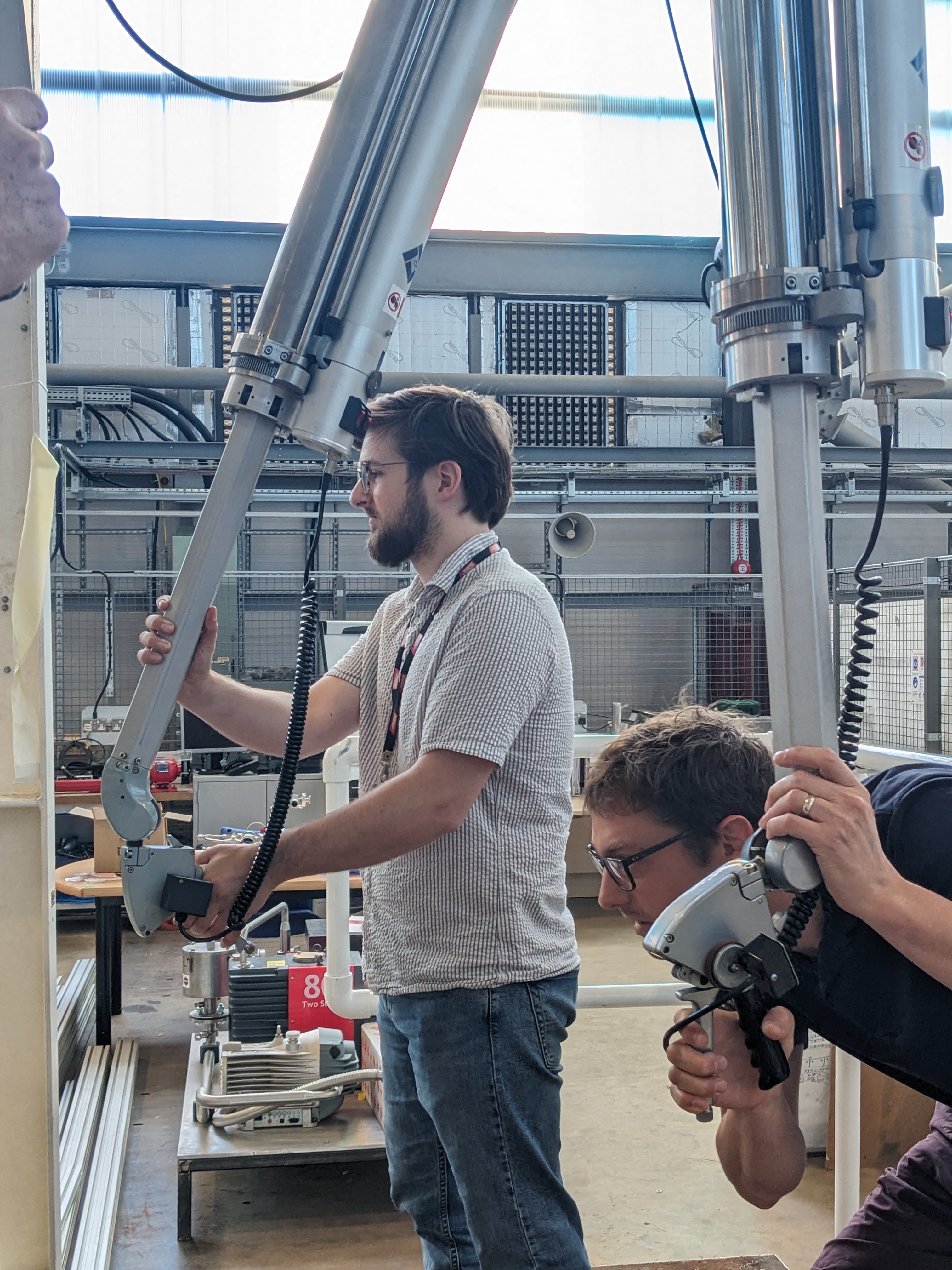In June, members of STFC Technology's High-Power Targets group visited ISIS's remote handling facility to test their new target replacement component, developed for DUNE at LBNF.
 Remote testing in progressThe Long-Baseline Neutrino Facility's (LBNF) Deep Underground Neutrino Experiment (DUNE) is an international collaboration hosted by Fermilab – the United States Department of Energy's National Laboratory.
Remote testing in progressThe Long-Baseline Neutrino Facility's (LBNF) Deep Underground Neutrino Experiment (DUNE) is an international collaboration hosted by Fermilab – the United States Department of Energy's National Laboratory.
Particle physicists seek to
use LBNF to understand the role that neutrinos have in our universe and, through this, search for the origin of matter, learn more about neutron stars and black holes, and shed light on the unification of nature's forces.
Technology has been involved in target development for the DUNE experiment since their conceptional design study in 2017, after which the RAL-led team received £1.4M funding to carry out the preliminary target design as a part of the Phase 1 project.
Subsequently, in April 2022, the team were awarded the remainder of a £6M allocation to deliver the target and its associated equipment to the LBNF facility in March 2027 for Phase 2.
Right on target
Some accelerators work by speeding up particles and then smashing into a target, which can be a solid or a liquid, to generate another type of interesting particle.
In LBNF's case, scientists will accelerate protons and collide them with a solid graphite target to produce a beam of neutrinos which eventually pass through the experiment's two detectors.
One of the biggest challenges in developing targets is figuring out how to handle them or, more specifically, how not to.
Once the proton beam has been activated, critical areas of the facility will become too radioactive to go near – this includes the target itself and its cooling systems.
This radioactive danger means that maintenance must be performed in a hot cell, a type of shielded container, using telemanipulator arms - a device that looks like a heavy-duty litter picker used to keep radioactive materials at arm's length.
Given the large scale of DUNE at LBNF, designing components with easy handling in mind is essential.
Collaborative testing
ISIS have decades of experience in exchanging targets and performing maintenance and repairs using telemanipulators, and their technicians and engineers have come up with some inventive solutions to remote handling problems.
Technology's High-Power Targets team visited their mock-up facility to assess the performance of the group's new remote helium coupling.
The coupling is an essential part of LBNF's target replacement and is just one part of the many remote handling interfaces developed for DUNE.
It allows the helium pipes, which flow cooling gas around the target to be swapped when a new target is required. It must be reliable and replicable, and allow enough tooling access to operate it in different locations.
Engineers and technicians will operate the coupling at 4 meters away using the full reach of the manipulator arms, which makes even holding a spanner a challenging task.
This challenge will be further complicated when using a real hot cell due to the distortion created by the lead glass window reducing visibility.
Ben Suitters, a member of Technology's High Power Targets group, explained more about the testing process:
“Learning from other facilities' experiences is the best way to prevent the same mistakes from happening twice. Our engineers couldn't plug a simple connector in without help – meanwhile, our ISIS Target Operations host (Chris Russell) connected the two parts of the plug with ease, demonstrating the skill these operators build over time. Using these sorts of connections relies on user skill, opening the door to costly mistakes and damage. We aim to improve our designs so there's less of a reliance on skill.
There is a long way to go to make LBNF as easy as possible to maintain – the less time taken for maintenance, the more time for science!"
To learn more about DUNE at LBNF, visit the Fermilab's website.
Discover photos of our High Power Targets team testing out the facility below




Written by Cat Lewin-Williams and Ben Suitters.
